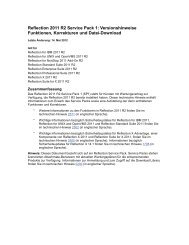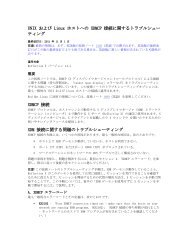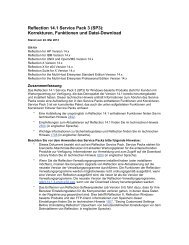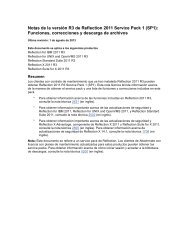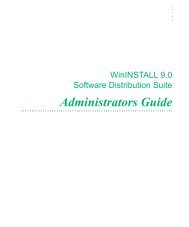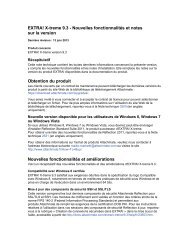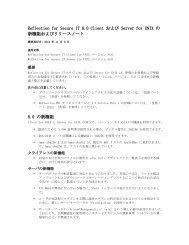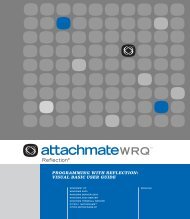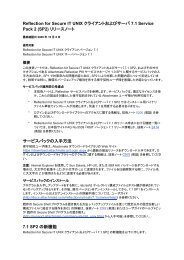are registered trademarks, the Attachmate logo is a trademark and
are registered trademarks, the Attachmate logo is a trademark and
are registered trademarks, the Attachmate logo is a trademark and
Create successful ePaper yourself
Turn your PDF publications into a flip-book with our unique Google optimized e-Paper software.
WINHLLAPI LANGUAGE REFERENCE<br />
Purpose<br />
Th<strong>is</strong> document <strong>is</strong> intended to ass<strong>is</strong>t customers who want to enable new or ex<strong>is</strong>ting<br />
automation softw<strong>are</strong> to work with a legacy application programming interface<br />
implemented in a current <strong>Attachmate</strong> emulator product: WinHLLAPI, EHLLAPI,<br />
<strong>Attachmate</strong> HLLAPI, Enterpr<strong>is</strong>e Access Library (EAL), PCSHLL (IBM PCOMM 4.01<br />
EHLLAPI), or WD_API (Wall Data abstraction of HLLAPI).<br />
<strong>Attachmate</strong> recommends that new automation programs be developed using<br />
EXTRA!'s COM (OLE Automation) interfaces. Only when a new automation program<br />
requires obscure capability not available in a COM solution should a legacy API be<br />
considered. In such situations, <strong>Attachmate</strong> recommends WinHLLAPI be given first<br />
preference, if only because it came about through an industry st<strong>and</strong>ardization effort.<br />
A second option would be EHLLAPI.<br />
Introduction<br />
An application programming interface, API, <strong>is</strong> typically provided in a softw<strong>are</strong> product<br />
to facilitate development of applications that automate tasks employing <strong>the</strong> softw<strong>are</strong>.<br />
For tasks that <strong>are</strong> highly repetitive, time-consuming or error-prone, automation can<br />
ra<strong>is</strong>e user job sat<strong>is</strong>faction, reduce operational costs, <strong>and</strong> improve service to<br />
customers.<br />
Windows High-Level LanguageAPI (WinHLLAPI) <strong>is</strong> one such API, <strong>the</strong> specification for<br />
which was written originally by a consortium of representatives from <strong>Attachmate</strong>,<br />
Digital Communications Associates Inc., Synapse Communications, NetSoft, <strong>and</strong> Wall<br />
Data Incorporated, <strong>and</strong> publ<strong>is</strong>hed in1993 by Microsoft. The specification for Windows<br />
HLLAPI built on <strong>the</strong> de facto IBM EHLLAPI programming st<strong>and</strong>ard, employed<br />
successfully throughout business <strong>and</strong> industry for a wide range of automation tasks.<br />
Accessing <strong>Attachmate</strong> 32-bit WinHLLAPI<br />
In brief, an application accesses th<strong>is</strong> interface by:<br />
• Ensuring <strong>Attachmate</strong> softw<strong>are</strong>, including dynamic load library WHLAPI32.DLL,<br />
<strong>is</strong> in <strong>the</strong> system search path, so it will be found <strong>and</strong> loaded when referenced.<br />
• Ensuring that a session <strong>is</strong> configured to be associated with a HLLAPI "shortname".<br />
• Declaring in application code specific reference to <strong>the</strong> WinHLLAPI entry point<br />
<strong>and</strong> its parameter l<strong>is</strong>t. Th<strong>is</strong> reference will depend on <strong>the</strong> application<br />
programming language, for example:<br />
C++:<br />
extern "C" void WINAPI WinHLLAPI(LPWORD, LPSTR, LPWORD, LPWORD);<br />
V<strong>is</strong>ual Basic:<br />
Prep<strong>are</strong>d by <strong>Attachmate</strong> Technical Support 1



